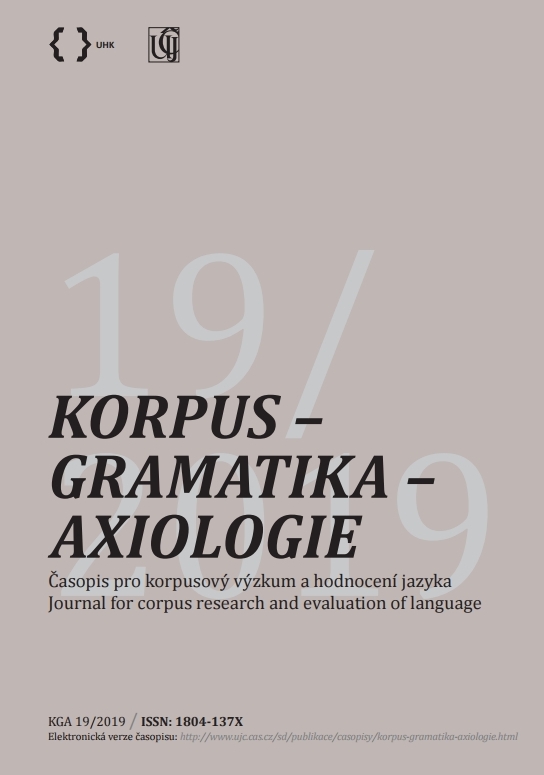Iterativa typu bývat, dělávat, chodívat v současné češtině
Habitual-iterative verbs such as bývat, dělávat, chodívat in contemporary Czech
Author(s): Ondřej BláhaSubject(s): Language and Literature Studies, Theoretical Linguistics, Morphology
Published by: AV ČR - Akademie věd České republiky - Ústav pro jazyk český
Keywords: Czech language; verbal aspect; aktionsart; iterative verbs; current tendencies
Summary/Abstract: The paper deals with the inventory and distribution of habitual-iterative verbs in contemporary Czech, using data acquired from corpora SYN2000 and SYN2015. These corpora are parts of Czech National Corpus and refer to two subsequent phases in the development of contemporary Czech, containing texts from years 1990 to 1999 and from 2010 to 2014. The data show that iterative verbs with habitual meaning recede, to a certain extent, in contemporary Czech: the corpus SYN2000 includes 475 lemmas and 40 714 tokens of iterative verbs and corpus SYN2015 414 lemmas and 49 929 tokens. This indicates that mentioned receding of iteratives in Czech refers only to their inventory (the number of lemmas), not to the occurence of these verbs, which is even slightly rising. The iterative verbs are typical for written language: they are much less common in spoken Czech. Comparing mentioned two samples, we can observe that there are some subtile changes in the stylistic distribution of the iterative verbs: these verbs prevail in specialized or administrative texts in both samples, but the younger sample (SYN2015) contains the slightly higher number of iterative verbs in journalistic texts than the older sample (SYN2000), whereas the number of iteratives is descending in ficitional texts (when compared both the samples). In addition, the iterative verbs are not so common in texts translated into Czech language from English, compared with texts that were originally written in Czech. From the point of view of grammar, the iterative verbs maintain (more or less) their grammatical particularities like the lack of the future or imperative forms and the tendency to occur in the finite verbal forms and in the 3rd person form more often than it is usual among non-iterative, normal verbs. The occurence of iterative verbs in preterite, as the younger sample shows, is rather increasing.
Journal: Korpus - gramatika - axiologie
- Issue Year: 2019
- Issue No: 19
- Page Range: 3-14
- Page Count: 12
- Language: Czech

